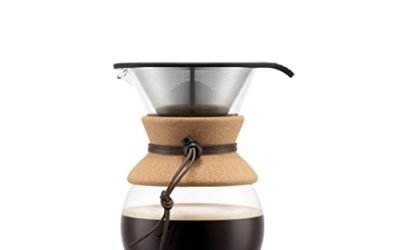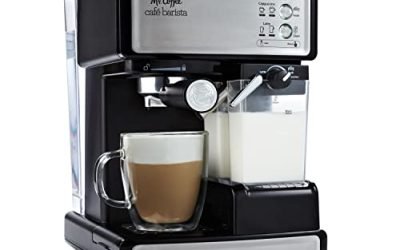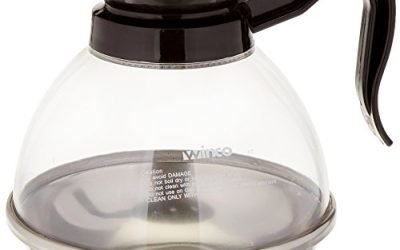In this step-by-step guide, you will learn how to make a latte with an espresso machine. You will start by grinding your coffee beans and tamping them into the portafilter. Then, you will attach the portafilter to the espresso machine and start the extraction process. While the espresso is being brewed, you will froth your milk using the steam wand. Once the espresso is done, you will pour it into a cup and add the frothed milk on top, creating the perfect latte. Finally, you can add any additional flavorings or toppings of your choice. With this guide, you’ll be enjoying a delicious homemade latte in no time!
Brewing Up Success with Espresso Machines
Step-by-Step Tutorial: Making a Latte at Home with an Espresso Machine
Gather your ingredients and equipment
Gather the following ingredients: espresso beans, milk, and any flavorings or sweeteners you like. Make sure you have an espresso machine, a grinder (if necessary), a milk frother or steam wand, a tamper, and a mug or cup to serve your latte in.
Grind your espresso beans
Measure out the desired amount of espresso beans. Next, grind them to a fine consistency. Adjust the grind size according to your personal preference and the recommendations of your espresso machine’s manufacturer.
Preheat your espresso machine
Before brewing your espresso, it’s important to preheat your machine. This will ensure that the water reaches the optimal temperature for extracting the flavors from the coffee grounds. Follow these simple steps to preheat your espresso machine:
- Turn on the machine: Locate the power switch and turn on your espresso machine. Wait for it to heat up before proceeding to the next step.
- Flush the system: Run a cycle of hot water through the machine to flush out any residue. Place an empty cup or container under the group head and activate the brewing function. Let the hot water flow through the machine for about 10-15 seconds.
- Warm the portafilter: While the machine is flushing, place the empty portafilter (the handle with the coffee basket) into the group head. Leave it there for a few minutes to warm up. This will help maintain the temperature of the brewed espresso.
- Monitor the temperature: Some espresso machines have temperature indicators or lights that indicate when the machine is ready to brew. Keep an eye on these indicators to ensure the machine has reached the optimal temperature. If your machine doesn’t have a built-in indicator, give it at least 10-15 minutes to heat up before brewing.
By following these steps, you’ll ensure that your espresso machine is properly preheated and ready to brew a delicious cup of espresso. Remember to always refer to your machine’s manufacturer instructions for specific preheating guidelines. Enjoy your perfect cup of espresso!
Prepare your portafilter
To prepare your portafilter, follow these steps:
- Insert the portafilter into the group head of your espresso machine.
- If your machine has a double spout, use a double shot basket. For a single spout, use a single shot basket.
- Make sure that the portafilter is clean and dry before proceeding.
Dose and tamp your coffee
To achieve the perfect latte, start by using a scale to measure out the desired amount of coffee grounds. For example, weigh out 18 grams of coffee. Next, distribute the grounds evenly in the portafilter, making sure they are spread out in a uniform layer. Now, grab your tamper and firmly press down on the grounds using even pressure. Imagine you’re applying around 30 pounds of pressure. This will create a level and compact coffee bed, which will result in a more consistent extraction and better-tasting latte.
Extract your espresso shot
To extract your espresso shot, carefully place your prepped portafilter back into the group head of the espresso machine. Next, start the extraction process by activating the machine. Watch as the delicious espresso begins to flow into your waiting cup. Remember, the ideal extraction time should be around 25-30 seconds for a perfectly rich and flavorful shot. Enjoy every sip!
Steam and froth your milk
While your espresso shot is brewing, pour cold milk into a pitcher. Submerge the steam wand or milk frother into the milk and turn it on. Position the wand just below the surface of the milk, creating a whirlpool motion. Heat and froth the milk until it reaches a silky and velvety texture.
To achieve the perfect milk texture, follow these steps: first, grab a pitcher and pour some cold milk into it. Next, place the steam wand or milk frother into the milk, ensuring it is fully submerged. Don’t forget to turn it on! Now, position the wand just below the surface of the milk, allowing it to create a whirlpool effect. Keep heating and frothing the milk until it becomes smooth and velvety to the touch. With these simple instructions, you’ll be able to create a delightful milk foam for your espresso-based drinks in no time!
Combine espresso and milk
To combine espresso and milk, start by preparing your espresso shot. Once it’s ready, froth your milk to your desired consistency. Carefully pour the desired amount of milk into your cup of espresso, using a spoon to hold back the froth as you pour. Then, use the spoon to spoon the remaining froth on top of your latte. Enjoy your deliciously combined espresso and milk!
Add any additional flavorings
To add additional flavorings to your latte, start by selecting your desired syrup, spice, or sweetener. For example, you could try adding vanilla syrup, a sprinkle of cinnamon, or a teaspoon of honey. Once you’ve chosen your flavoring, pour it into your latte and give it a good stir to ensure the flavors are evenly distributed. Experiment with different combinations to find your perfect flavored latte. Enjoy!
Enjoy your homemade latte
Finally, sit back and savor your delicious homemade latte. Adjust the ratios of espresso, milk, and flavorings to your liking. Experiment with different coffee beans, milk types, and techniques to perfect your latte-making skills.
The perfect latte awaits!
In conclusion, mastering the art of making a latte with an espresso machine is easier than you think. By following the simple steps outlined in this blog post, you can become a latte pro in no time. Remember to use high-quality ingredients, froth your milk to the perfect consistency, and experiment with flavors to create your own signature latte. So, grab your espresso machine and get ready to impress yourself and your friends with your barista-worthy latte skills. Cheers to delicious homemade lattes!
Gather Your Supplies
Mastering the Art
Getting Started with Your Espresso Machine
- Start by reading the instruction manual of your specific espresso machine model. It will provide you with important information and safety guidelines
- Fill the water reservoir of the machine with fresh, cold water. Make sure not to overfill it
- Grind your coffee beans to a fine consistency, suitable for espresso. You can use a burr grinder for the best results
- Measure the appropriate amount of coffee grounds and place them into the portafilter. Use a tamper to evenly distribute and compact the coffee
- Attach the portafilter securely to the machine, ensuring it is properly locked in place
- Place your espresso cup or shot glass underneath the portafilter spout
- Turn on the machine and allow it to heat up. Most espresso machines have an indicator light that will let you know when it’s ready
- Once the machine is heated, engage the brewing process by selecting the desired brewing option (single shot, double shot, etc.)
- The espresso should start pouring into your cup. Monitor the extraction time, aiming for around 25-30 seconds for a balanced shot
- Once the desired amount of espresso is extracted, turn off the machine and remove the cup
- Clean the portafilter and the machine properly after each use to maintain its performance and longevity
- Remember, practice makes perfect when it comes to making espresso. Don’t be discouraged if your first attempts aren’t perfect. With time and experience, you’ll become more skilled at using your espresso machine. Enjoy the process and savor your homemade espresso!
Got questions about espresso machines? We’ve got answers!
What’s the difference between a manual, semi-automatic, and fully automatic espresso machine?
Sure! Let me break it down for you.
A manual espresso machine, also known as a lever espresso machine, requires you to manually control the entire brewing process. You have to grind the coffee beans, measure and pack the grounds into the portafilter, and then pull a lever or handle to force hot water through the coffee. It gives you more control over the process but requires more skill and practice.
A semi-automatic espresso machine is a step up from a manual one. It automates the water flow, so you don’t have to manually control it. You still need to grind and pack the coffee, but the machine will take care of the water pressure and extraction time. Semi-automatic machines usually come with additional features like programmable buttons for shot volumes and temperature control.
On the other hand, a fully automatic espresso machine takes things a step further. It not only automates the water flow but also controls the grind size, water temperature, and shot volume. You usually just need to press a button, and the machine will handle the rest. These machines are more user-friendly and convenient, but they may limit your control over the brewing process.
So, in summary, manual espresso machines require complete manual control, semi-automatic machines automate the water flow, and fully automatic machines handle most aspects of the brewing process. The choice depends on your preference for control, convenience, and skill level.













I really enjoyed this guide! It was very easy to follow and the steps were well explained. I would love to see more guides on different coffee drinks, like cappuccinos or macchiatos. Keep up the great work!
I tried making a latte using this guide and it turned out amazing! The instructions were clear and the end result was delicious. I can’t wait to experiment with different flavorings and toppings. Thank you!
I would love to see a guide on how to properly clean and maintain an espresso machine. It would be helpful to know how to keep the machine in good condition and avoid any potential issues.
This guide was great for beginners, but do you have any advanced tips for more experienced espresso machine users? I would love to learn some techniques to take my latte-making skills to the next level.